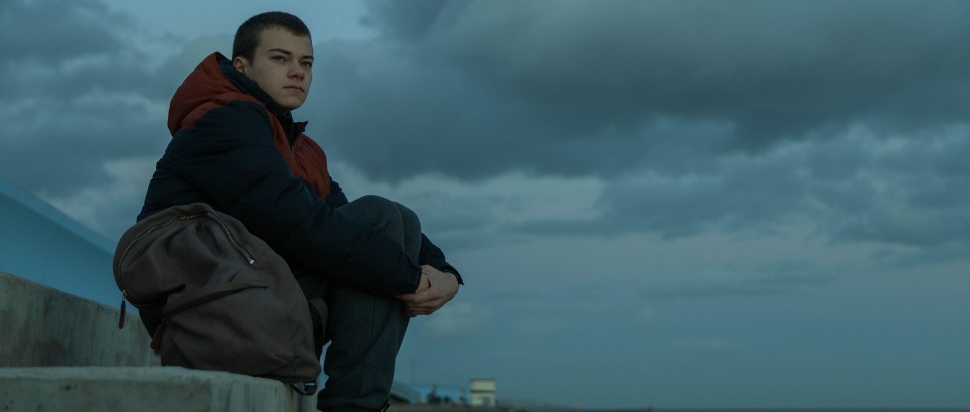Henry Blake on County Lines
Henry Blake takes his experience as a youth worker into his debut feature County Lines, which he hopes will change perception of the kinds of young people he works with, who often find themselves exploited into a life of crime
A thoroughly absorbing though deeply upsetting drama, County Lines is a remarkable debut feature from New Zealand-born writer-director Henry Blake. Inspired by his own experiences as a youth worker in East London, the film explores how personal and economic factors lead to 14-year-old Tyler (the magnetic Conrad Khan) being groomed for involvement in the eponymous drug-dealing networks that exploit vulnerable children into trafficking Class A drugs, primarily heroin and crack cocaine, from urban areas to rural or coastal towns.
Co-starring Ashley Madekwe and Harris Dickinson, County Lines is a vital empathy machine concerning a difficult subject sometimes prone to bad faith discussions when it comes to the young people who get caught up in the trafficking. But with genuine cinematic verve and complex characterisation, it’s far from a didactic tug on the heartstrings.
Speaking to us at the Glasgow Film Festival back in February, Henry Blake discusses some of his intentions for the project…
You did, and still do, work as a youth worker. What’s the general daily routine of that?
I work with very vulnerable children. When I was doing one-to-one work, I would see a child up to three or four hours every single day. And within that, your goals would be to educate, to try and address certain behaviours and issues that the child might be experiencing, and then to relay that progression, or lack of progression, back to social workers, parents, foster carers or the local authority.
And then within group work, what you do a lot of the time is you take a theme or an idea and then you discuss that with the group. You might try and unpick certain myths or certain perceptions of that issue or theme and offer a new perspective. And a lot of youth work, when you're working with vulnerable, traumatised children, is really to try and re-empathise that child. That trauma can have a really devastating effect on their wellbeing; on the outlook that child has on the world. You’re there to try and build a deeper style of trust as an adult that that child probably has not experienced, or if they have, that trust has been broken.
How did you first get involved?
In my early 20s, my friends were doing it and my wife, Victoria, was doing it. And I ended up doing it just out of sheer necessity; living in London is expensive. But what happened was I ended up being especially good at working with the most vulnerable, desperate cases. It took a toll on me, for sure. But if you're good at something, it's very hard to stop doing it. Here we are 11 years later, and I'm still doing it while also making films.
Was part of the motivation in writing the film to correct common public misconceptions and prejudices about the young people involved?
The goal with the film was to create a very deep emotional resonance with the issue, because if there isn't an emotional resonance then it's very easy to cast aside, to dismiss and deflect responsibility. But this is a community issue at every level. It’s about trying to build a public awareness which has a deeper emotional resonance, rather than just chucking people a load of statistics. You need to chuck people the human element of this so they really understand what's at stake.
It’s all about creating an emotional and psychological landscape and making choices along the way. And I think you can really succinctly say what you want to say with a powerful, singular narrative film. I really wanted to just essentially bathe people in a quite tough but poetic, compassionate character drama.
The violence and gruesome content on-screen are really interesting in terms of the blocking and naturalistic sound design used – it’s not just blood packs exploding.
I've seen a lot of violence. So, I wanted to try and get as close as I can to what I've seen and create an uncomfortable distance to it, not just go handheld on everything and then whip up to a blood-splattered wall. It was more about how when the violence occurs; you should feel like you can put your hand into the frame but you're just out of reach to help. It was all about judging distance.
When someone does get hit, blood doesn't go everywhere. The thuds are really awkward; skin hitting skin. I wanted it to be very uncomfortable and that's what real violence is. It disturbs and disrupts you in a way that's very unnerving.
This approach was presumably beneficial to the film getting a 15 certificate instead of an 18.
Maybe if I'd been a bit more Gaspar Noé about it, it probably might have gotten an 18. But I think it's the more interesting film for the choices that have been made. A lot of it, also, is implied, and what's so interesting is the audience is still having to work. I find cinema like that really thrilling.
Released 4 Dec by BFI in cinemas and on the BFI Player; certificate 15
bfi.org.uk/whats-on/bfi-film-releases/county-lines
